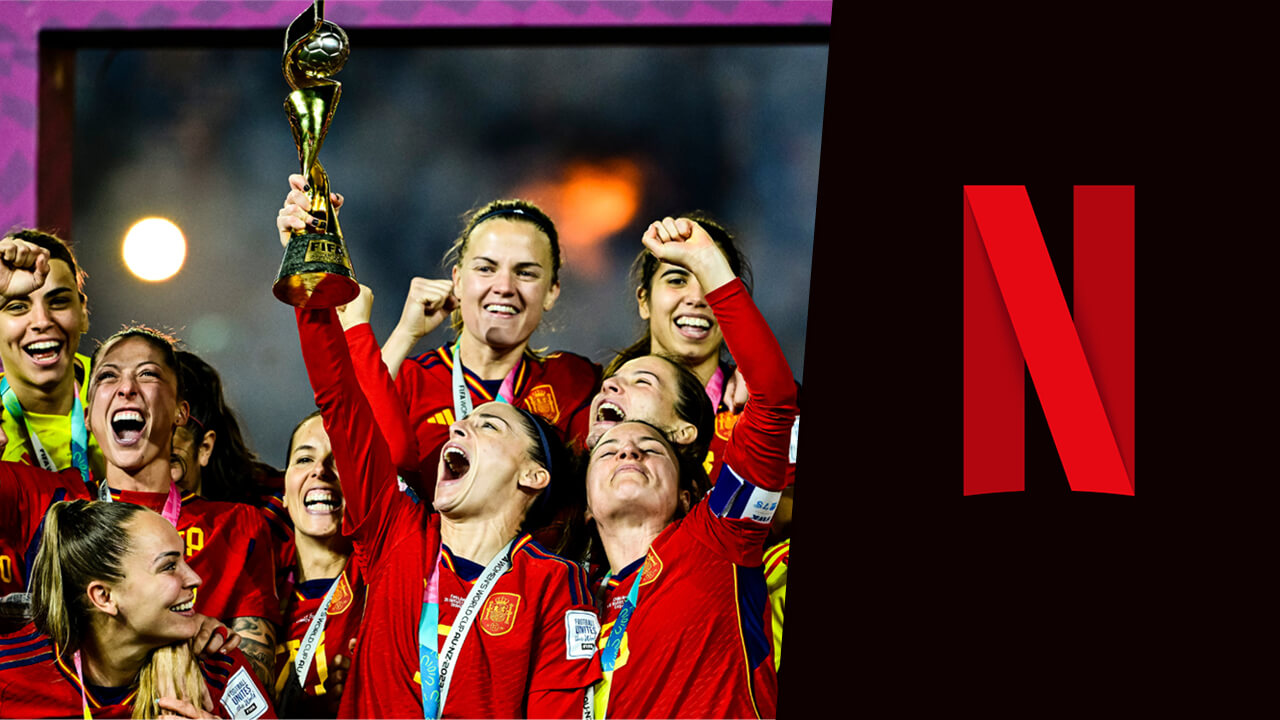In a groundbreaking development for women’s sports broadcasting, Netflix has secured the U.S. rights to the FIFA Women’s World Cup, one of the most prestigious global tournaments in women’s soccer. This landmark deal marks a new chapter in the relationship between streaming platforms and live sports broadcasting. The FIFA Women’s World Cup, a tournament that showcases some of the best soccer talent in the world, will now be available to U.S. audiences through Netflix, bringing the action, drama, and passion of international women’s soccer to millions of homes.
The deal is set to revolutionize the way U.S. audiences experience the FIFA Women’s World Cup, as the world’s most popular streaming platform enters the realm of live sports. This article will explore the significance of this deal, its implications for both Netflix and the global soccer community, and what fans can expect from this collaboration in the future.
The Rise of Women’s Sports
Women’s sports have been gaining significant traction over the past decade, with growing viewership, increased investment, and a rising number of corporate sponsors. The FIFA Women’s World Cup, which takes place every four years, is one of the leading examples of this growth. The 2019 Women’s World Cup, held in France, was a major milestone for women’s sports, with the U.S. Women’s National Team (USWNT) winning their fourth World Cup title. The tournament received massive media attention, with record-breaking TV ratings and social media engagement, proving that women’s sports can draw significant audiences.
As the popularity of women’s sports continues to rise, streaming services have recognized the potential of live sports broadcasting. Netflix, in particular, has made significant strides in diversifying its content beyond scripted shows and movies. With the acquisition of the U.S. rights to the FIFA Women’s World Cup, Netflix is solidifying its commitment to bringing high-quality sports content to its subscribers, particularly in a market where women’s sports are seeing an unprecedented rise in popularity.
What This Deal Means for Netflix
Netflix has traditionally been known for its extensive library of TV shows, movies, and documentaries. However, in recent years, streaming platforms have increasingly turned to live sports as a way to attract and retain subscribers. Platforms like Amazon Prime Video and Apple TV+ have already entered the sports broadcasting world, securing deals for exclusive rights to major events like the NFL and MLB. Netflix’s acquisition of the U.S. rights to the FIFA Women’s World Cup is a significant step in its pursuit of becoming a major player in the live sports broadcasting space.
For Netflix, this deal presents an opportunity to expand its global reach, particularly in the United States, where soccer is growing in popularity, especially among younger audiences. By securing the rights to the FIFA Women’s World Cup, Netflix can tap into the growing interest in women’s sports and offer exclusive coverage of one of the most-watched soccer tournaments in the world. The partnership also aligns with Netflix’s strategy of diversifying its content offerings, ensuring that it remains competitive in an increasingly crowded streaming market.
The deal is likely to attract new subscribers, particularly those who are passionate about women’s soccer and sports in general. Netflix has long been a leader in producing documentaries and original content that explores the stories behind athletes, teams, and sporting events. With its new sports broadcasting venture, Netflix will have the opportunity to create compelling content surrounding the Women’s World Cup, from match coverage to behind-the-scenes features and player profiles. This content will appeal to both casual sports fans and dedicated soccer enthusiasts.
Impact on the FIFA Women’s World Cup
The partnership between Netflix and FIFA is a monumental step for women’s soccer, which has long struggled to receive the same level of attention and resources as men’s sports. The Women’s World Cup, although a prestigious event in the world of soccer, has often been overshadowed by its male counterpart, the FIFA Men’s World Cup. The broadcast of the tournament on a major platform like Netflix signals a shift in how women’s sports are being perceived and consumed by the public.
For FIFA, this deal represents an opportunity to expand the global footprint of the Women’s World Cup. By partnering with a streaming giant like Netflix, FIFA can reach a wider and more diverse audience, particularly in the U.S., which has traditionally been a strong market for soccer. The visibility and media attention generated by this deal will only help elevate the profile of women’s soccer, attracting new fans and inspiring future generations of female athletes.
One of the challenges facing women’s sports has been the lack of coverage and investment compared to men’s sports. While the FIFA Women’s World Cup has grown in stature over the years, its broadcast rights have often been undervalued in comparison to the men’s tournament. By securing the U.S. rights to the Women’s World Cup, Netflix is helping to shift this narrative and ensure that women’s sports receive the exposure they deserve.
What Fans Can Expect
Fans of the FIFA Women’s World Cup can look forward to comprehensive coverage of the tournament, with all the excitement, drama, and emotion that comes with watching the world’s best female soccer players compete on the global stage. Netflix will likely provide a range of features to enhance the viewing experience, including live match coverage, highlight reels, player interviews, and behind-the-scenes content.
In addition to the live broadcasts, Netflix will likely produce original content surrounding the tournament. This could include documentaries exploring the history of the Women’s World Cup, profiles of star players, and in-depth analysis of the teams and matches. Netflix’s proven track record of producing high-quality sports documentaries, such as Formula 1: Drive to Survive and The Last Dance, suggests that the platform will deliver a similarly compelling experience for fans of the Women’s World Cup.
For viewers in the U.S., this deal offers a unique opportunity to watch the tournament on a platform they already subscribe to, without the need for cable or satellite TV. As streaming continues to replace traditional TV for many viewers, Netflix’s acquisition of the rights to the FIFA Women’s World Cup offers a convenient and accessible way for fans to enjoy the tournament.
The Future of Women’s Sports Broadcasting
Netflix’s acquisition of the U.S. rights to the FIFA Women’s World Cup is just the beginning of what could be a broader trend in women’s sports broadcasting. As more and more fans embrace women’s sports, streaming platforms are likely to continue investing in the rights to major events and tournaments. This could lead to increased visibility for female athletes, more sponsorship opportunities, and greater financial investment in women’s sports overall.
The success of the Women’s World Cup on Netflix could pave the way for other streaming platforms to secure similar broadcasting deals for women’s sports. As the media landscape continues to evolve, it’s clear that women’s sports are no longer a niche market but a thriving, integral part of the global sports industry.
Conclusion
Netflix’s acquisition of the U.S. rights to the FIFA Women’s World Cup is a historic moment for women’s sports, one that could redefine the future of sports broadcasting. By bringing the tournament to millions of U.S. viewers, Netflix is not only expanding its content offerings but also helping to elevate the profile of women’s soccer. This deal represents a significant step toward greater equality in sports media and signals a new era for women’s sports coverage, where female athletes and events receive the attention and investment they deserve. With the world’s best soccer players set to compete on one of the world’s largest streaming platforms, fans can expect a thrilling, accessible, and transformative viewing experience.













